Slide Show - Understanding AML-MRC and tAML
Click here to take our SURVEY
Your feedback is important to us! We will use your feedback to develop future areas of content about AML which will help other patients, caregivers and families.
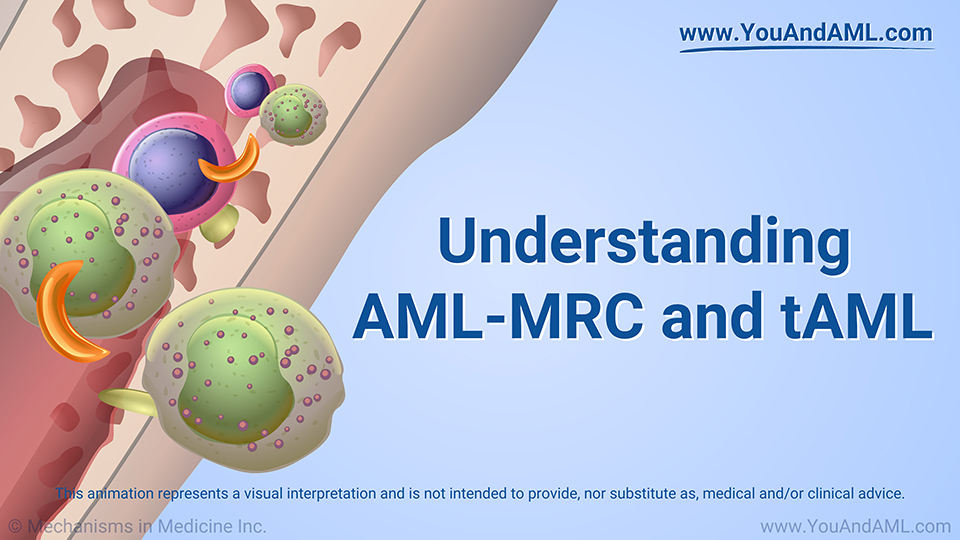
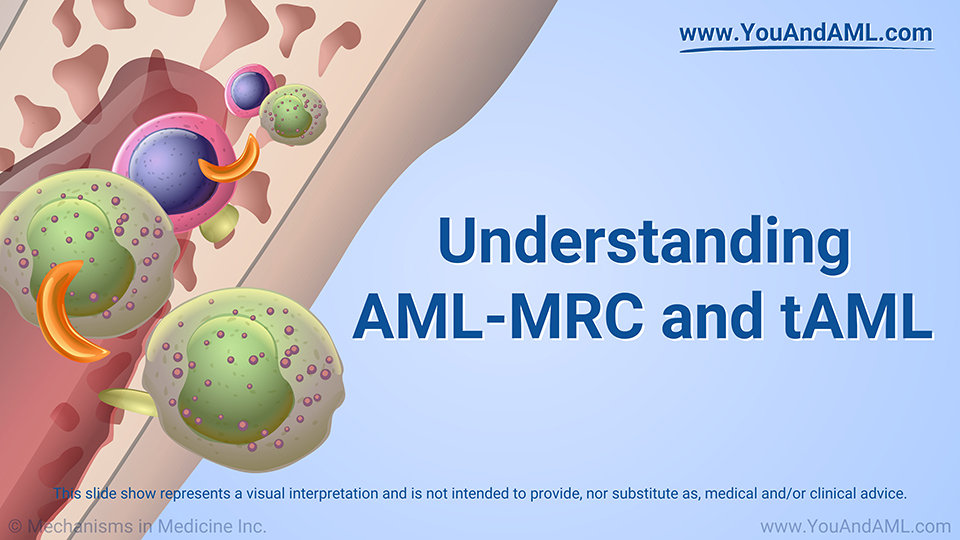

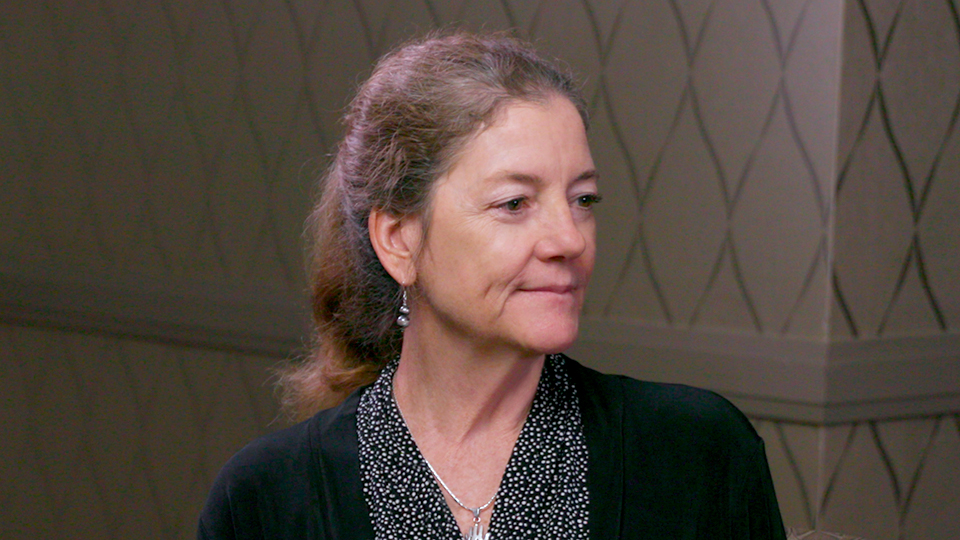

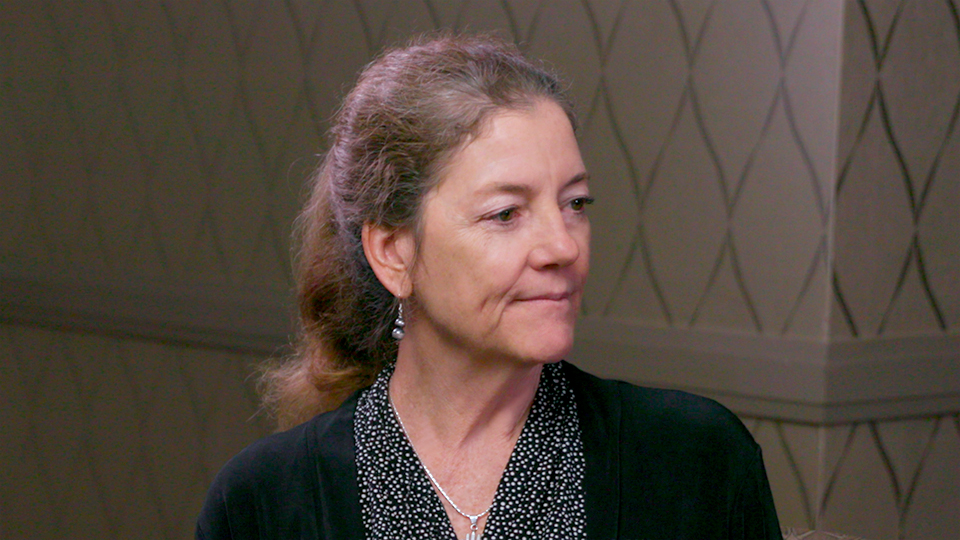
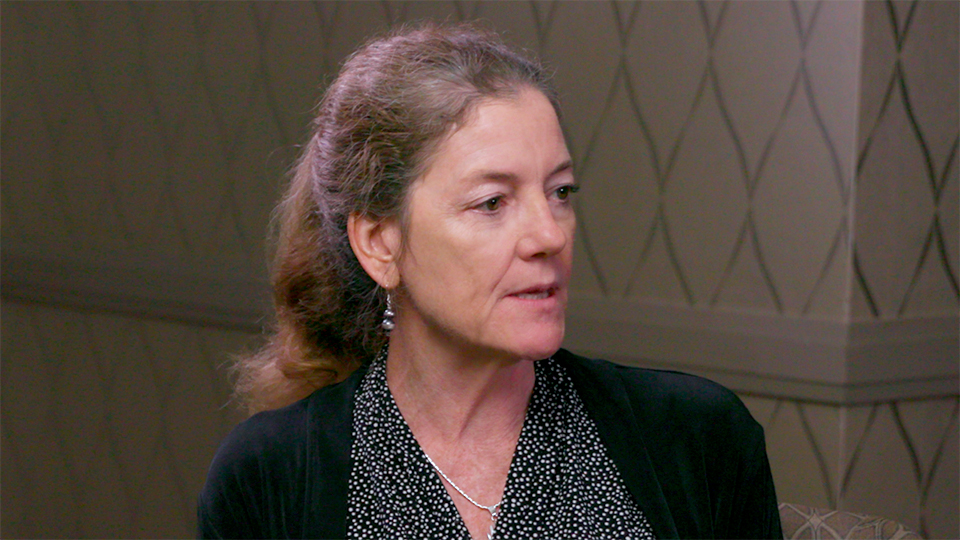


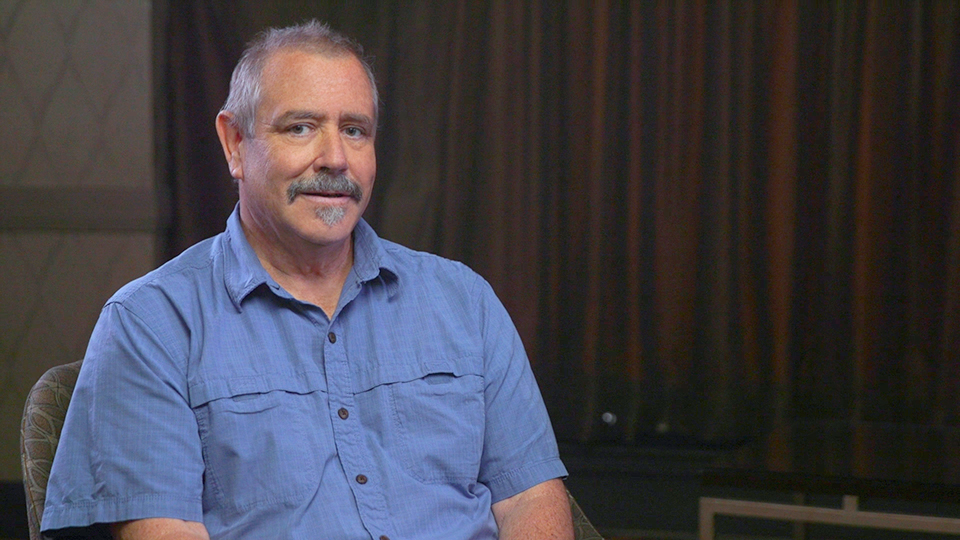
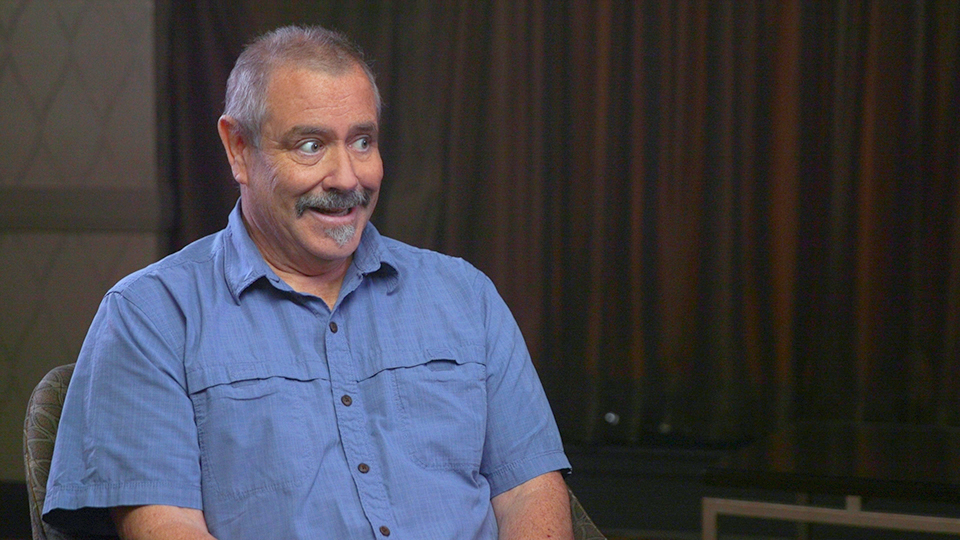
Understanding AML-MRC and tAML
*Please note: This slide show represents a visual interpretation and is not intended to provide, nor substitute as, medical and/or clinical advice.
What is AML with myelodysplasia-related changes (AML-MRC)?
Acute myeloid leukemia, or AML, is a cancer that starts in the bone marrow, the soft inner part of the bone where blood cells are made.
AML that starts abruptly with no known prior exposure to chemotherapy or radiation and no prior cancer diagnosis is called “de novo” AML and is discussed in another segment in this series.
AML with myelodysplasia-related changes (or AML-MRC) is a subtype of AML.
What is AML with myelodysplasia-related changes (AML-MRC)? (Continued)
The term AML-MRC is used to describe AML in someone who has previously been diagnosed with MDS, or whose blood and bone marrow cells have genetic changes or have an abnormal appearance under the microscope. These changes are commonly found in a group of conditions called myelodysplastic syndromes, or MDS.
What is myelodysplasia?
“Myelodysplasia” describes blood cells that are not maturing as they should and that look abnormal under the microscope.
“Myelo” is the Greek word for “bone marrow.”
“Dysplasia” means that cells look abnormal under a microscope. “Dys” means “bad” and “plasia” means “formation,” so these cells are forming badly.
“Myelodysplasia” refers to immature, abnormal-looking cells found in the bone marrow.
Typically, this results in too many immature, abnormal-looking cells in the bone marrow and too few healthy blood cells.
What is tAML?
Treatment-related AML (or tAML) is a type of AML that is associated with previous treatment for other cancers using radiation, chemotherapy or both.
What is secondary AML?
Both AML-MRC and tAML are types of “secondary” AML. They are secondary because they occur after the patient has had MDS or another type of cancer.
How common are AML-MRC and tAML?
More than 20,000 new cases of AML occur in adults every year in the United States. In about a third of these new cases, the patient is diagnosed with AML-MRC or tAML.
What is secondary MDS?
Secondary MDS is MDS that occurs in someone who has had another bone marrow disease. This can be an inherited condition such as Down syndrome or an acquired condition such as aplastic anemia in which the patient’s immune system attacks the bone marrow.
Sometimes the term “secondary MDS” is used to refer to therapy-related or treatment-related MDS. Therapy-related or treatment-related MDS is MDS that occurs in someone who was treated for cancer with radiation, certain chemotherapy drugs, or a stem cell transplant.
What are the symptoms of AML-MRC or tAML?
The symptoms of AML-MRC or tAML are the same as those of AML and can feel like the flu.
Symptoms include:
What are the symptoms of AML-MRC or tAML?
Unlike de novo AML, many patients with AML-MRC or tAML may develop these symptoms slowly and may have low white blood cell counts in addition to low red blood cells and platelets.
What are the risk factors for AML-MRC or tAML?
Those at highest risk for AML-MRC or tAML are:
Men are slightly more likely than women to get AML, AML-MRC, or tAML.
What is multilineage dysplasia?
Multilineage dysplasia is a feature of AML-MRC, tAML, and secondary MDS. It means that there are abnormalities in at least two types of blood cell in the bone marrow – for example, in both red and white blood cells, or in red or white blood cells and in platelets, or in both red and white blood cells and platelets. Each of the three main types of blood cells – red, white, and platelets – is called a “lineage”.
What is the outlook for AML-MRC, tAML, and secondary MDS?
Several factors can affect the outlook for patients with AML-MRC, tAML, or secondary MDS.
More questions about AML?
A hematologist is a doctor who specializes in treating blood diseases, including cancer. An oncologist is a doctor who specializes in treating cancers. Some oncologists specialize in MDS or AML. If you still have questions about AML, talk with a hematologist or oncologist who specializes in treating this type of blood cancer.
Click here to take our SURVEY
Your feedback is important to us! We will use your feedback to develop future areas of content about AML which will help other patients, caregivers and families.











This educational activity has been developed by the Myelodysplastic Syndromes Foundation, Inc. and Mechanisms in Medicine Inc.
This activity is supported by educational grants from AbbVie, Acceleron, Bristol-Myers Squibb, Celgene Corporation, Daiichi Sankyo, Jazz Pharmaceuticals and Takeda Oncology.
This website is part of the Animated Patient™ series developed by Mechanisms in Medicine Inc., to provide highly visual formats of learning for patients to improve their understanding, make informed decisions, and partner with their healthcare professionals for optimal outcomes.

